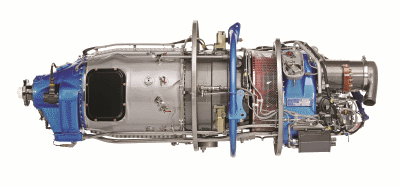Wed, Aug 18, 2021
AD 2021-15-10 Prompted By Several Reports Of Engine Gas Generator Speed (Ng) Rollbacks
The FAA is adopting a new airworthiness directive (AD) for all GE Aviation Czech s.r.o. (GEAC) H75-200, H80-100, and H80-200 model turboprop engines.

This AD was prompted by several reports of engine gas generator speed (Ng) rollbacks occurring below idle on GEAC H75-200, H80-100, and H80-200 model turboprop engines. This AD requires an inspection of a certain part number (P/N) fuel control unit (FCU) and, if deficiencies are detected, replacement of the FCU with a part eligible for installation. The FAA is issuing this AD to address the unsafe condition on these products. This AD is effective September 21, 2021.
Supplementary Information: The FAA issued a notice of proposed rulemaking (NPRM) to amend 14 CFR part 39 by adding an AD that would apply to all GEAC H75-200, H80-100, and H80-200 model turboprop engines. The NPRM published in the Federal Register on April 20, 2021 (86 FR 20465). The NPRM was prompted by several reports of engine gas generator speed (Ng) rollbacks occurring below idle on GEAC H75-200, H80-100, and H80-200 model turboprop engines. The NPRM proposed to require an inspection of a certain P/N FCU and, if deficiencies are detected, replacement of the FCU with a part eligible for installation. The FAA is issuing this AD to address the unsafe condition on these products.
The European Union Aviation Safety Agency (EASA), which is the Technical Agent for the Member States of the European Community, has issued EASA AD 2020-0082, dated April 1, 2020 (referred to after this as “the MCAI”), to address the unsafe condition on these products.
The MCAI states:
- Several occurrences have been reported of engine gas generator speed (Ng) rollbacks below idle on engines equipped with an affected part.
- The investigation determined that, during these events, the engine control lever (ECL) was set to idle, and identified as contributing factors specific environmental temperatures, possibly in combination with a high power off-take. The idle setting may be used in flight, in particular during the approach phase.
- This condition, if not detected and corrected, may lead to loss of engine power and eventually, on a single engine aeroplane, possibly result in loss of control.
- To address this potential unsafe condition, GEAC issued the ASB providing applicable instructions.
You may obtain further information by examining the MCAI in the AD docket at https://www.regulations.gov by searching for and locating Docket No. FAA-2021-0316.
More News
Aero Linx: The American Society of Aerospace Medicine Specialists (ASAMS) The Society is a non-profit organization created to serve as a voice for and represent the professional ne>[...]
Class C Service This service provides, in addition to basic radar service, approved separation between IFR and VFR aircraft, and sequencing of VFR aircraft, and sequencing of VFR a>[...]
Have A Story That NEEDS To Be Featured On Aero-News? Here’s How To Submit A Story To Our Team Some of the greatest new stories ANN has ever covered have been submitted by our>[...]
Also: ERAU Uses UAVs, P550 Group 2 UAS, Starship’s Florida Launches, NASA Missions Chopped The Air Force has put out a call to commission a one-to-one copy of the Iranian-des>[...]
Classic Klyde Morris From 11.07.16 (and Remembering Bob...) FMI: www.klydemorris.com>[...]
 ANN's Daily Aero-Linx (08.27.25)
ANN's Daily Aero-Linx (08.27.25) ANN's Daily Aero-Term (08.27.25): Class C Service
ANN's Daily Aero-Term (08.27.25): Class C Service ANN FAQ: Submit a News Story!
ANN FAQ: Submit a News Story! Airborne-NextGen 08.26.25: Iran UAV Knockoffs, X-37B Spaceplane, Army Training
Airborne-NextGen 08.26.25: Iran UAV Knockoffs, X-37B Spaceplane, Army Training Classic Klyde Morris (08.25.25)
Classic Klyde Morris (08.25.25)



